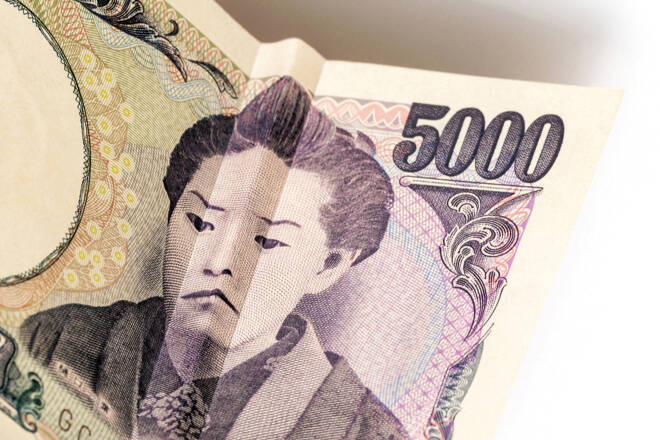Advertisement
Advertisement
USD/JPY Forecast: Will Diverging Producer Prices Trigger a Drop Below 145?
By:
Key Points:
- Japan's July producer prices could push USD/JPY toward 145, but BoJ’s cautious stance may limit this move.
- BoJ’s dovish comments and recent Yen carry trade unwind may temper the impact of rising producer prices on USD/JPY.
- US producer prices could create bearish trends for USD/JPY, with key support at 145.891 in focus.
Producer Prices and the Yen
On Tuesday, August 13, producer prices from Japan will spotlight the USD/JPY.
Economists forecast producer prices will increase by 0.3% in July, up from 0.2% in June.
Higher-than-expected numbers could fuel investor bets on a Q4 2024 Bank of Japan rate hike. Higher producer prices can signal rising demand, leading producers to pass costs on to consumers. Significantly, economists consider producer prices as leading indicators of headline inflation.
However, investors should also consider commentary from the Bank of Japan after the recent Yen carry trade unwind. While higher producer prices could push the USD/JPY toward 145, BoJ comments could limit the influence of the stats on the USD/JPY pairing.
Will the Bank of Japan Continue Downplaying Rate Hike Bets?
Last week, Bank of Japan Deputy Governor Uchida Shinichi responded to the Yen carry trade unwind and market volatility, saying,
“I believe that the Bank needs to maintain monetary easing with the current policy interest rate for the time being, with developments in financial and capital markets at home and abroad being extremely volatile.”
On Friday, August 9, former BoJ Board Member Makoto Sakurai shared his views on the BoJ rate path, stating,
“They won’t be able to hike again, at least for the rest of the year. It’s a toss-up whether they can do one hike by next March.”
Considering these comments, the BoJ may continue to signal the status quo on interest rates.
To provide further insight, experts have weighed in on the recent developments.
Expert Commentary
ARK Invest Founder, CEO, and CIO Cathie Wood recently commented on Treasury yields and the Fed Funds Rate, stating,
“The metal-to-gold ratio suggests that the 10-year Treasury bond yield should be around 2% today, not where it is at 3.8% or last October’s 5%. If the 10-year Treasury should yield ~2% today, should the Fed funds rate be closer to 1%?”
The Bank of Japan’s Summary of Opinions revealed the intention to return the policy interest rate to the neutral rate over time, projected at 1%.
If interest rate differentials matter, the outlook is bearish for the USD/JPY, even if the BoJ keeps interest rates on hold.
US Economic Calendar
On Tuesday, August 13, US producer prices could impact buyer demand for the US dollar.
Economists predict producer prices will increase by 0.1% in July, down from 0.2% in June.
Downward trends in producer prices could signal a softer inflation outlook and may support multiple Fed rate cuts and a possible USD/JPY move toward 145. Producers may lower prices in a falling demand environment, possibly reducing consumer prices.
Expert Commentary
In July, Arch Capital Global Chief Economist Parker Ross commented on the June producer price data, saying,
“June producer price inflation was a bit stronger than expected, but most of the strength came from a jump in trade services prices (i.e., wholesaler margins). Still not likely enough for a Fed rate cut in a couple weeks, but it certainly should be enough to get the Fed to start setting the stage at the July FOMC meeting for the first rate cut of this cycle in Sept.”
Producer prices were up 0.2% in June after stalling in May.
Short-term Forecast: Bearish
USD/JPY trends will hinge on the producer price data from Japan and the US. Diverging trends favoring the Yen could signal a USD/JPY drop toward 145. However, central bank comments may influence the USD/JPY pairing more. The USD/JPY may fall toward the August 5 low of 141.648 if support increases for multiple Fed rate cuts or recession fears intensify.
Investors should remain alert. Monitor real-time data, central bank insights, and expert commentary to adjust your trading strategies accordingly. Stay updated with our latest news and analysis to manage USD/JPY volatility.
USD/JPY Price Action
Daily Chart
The USD/JPY hovered below the 50-day and 200-day EMAs, confirming the bearish price trends.
A USD/JPY breakout from the 148.529 resistance level and the top trend line could signal a move toward 150. Furthermore, a break above 150 could bring the 151.685 resistance level into play.
Producer prices and central bank commentary require consideration on Tuesday.
Conversely, a drop below 147 could give the bears a run at the 145.891 support level. A fall through the 145.891 support level may bring the 143.495 support level into play.
The 14-day RSI at 31.37 indicates a USD/JPY drop below 147 before entering oversold territory.
About the Author
Bob Masonauthor
With over 28 years of experience in the financial industry, Bob has worked with various global rating agencies and multinational banks. Currently he is covering currencies, commodities, alternative asset classes and global equities, focusing mostly on European and Asian markets.
Did you find this article useful?
Latest news and analysis
Advertisement
